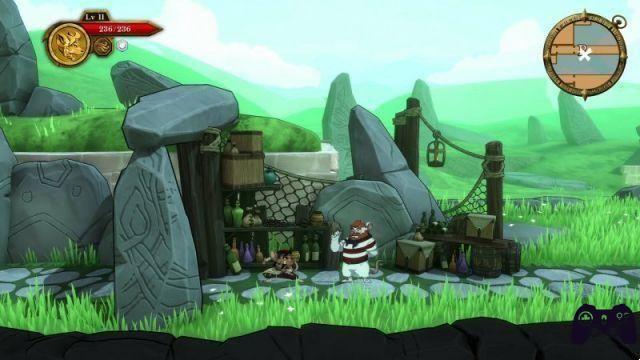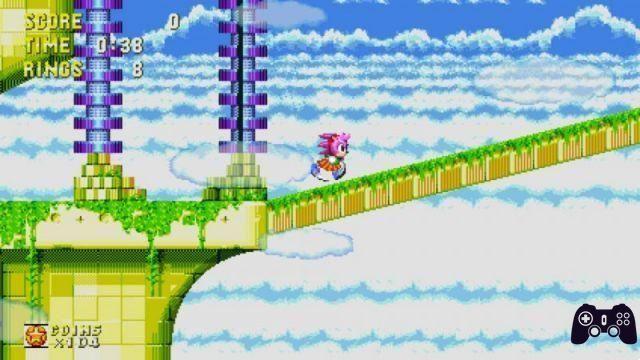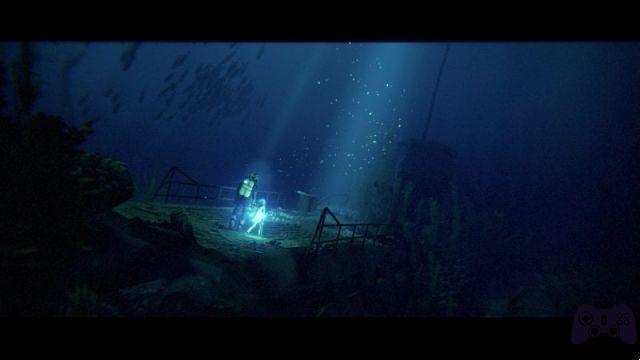Clearly NIS We enjoyed experimenting: multi-level dungeon explorations, imaginatively generated supporting characters, mixed combat systems, survival elements combined with culinary craftsmanship and we're just at the beginning. Monster Menu: The Scavenger's Cookbook is a set of features that are inserted into a bag, mixed, left to sit, and gently placed into a video game bag. The result? Less confusing than expected and closer to the already peculiar narratives of the volcanic publisher: yes, because now we expect everything from NIS and Monster Menu is just one of the many candles on the cake, one of those that could have been done better but that will be able to entertain anyone looking for a perfect Japanese game halfway between a cross between at least 4 different genres.
Let's see the reason for this preamble of ours in review of Monster Menu: The Scavenger Cookbook.
Many mechanics in one

Monster Menu, after all, is described as a Japanese strategic role-playing game: the truth is that many suffixes could be added to it. Let's try to give it a genre: Japanese strategic RPG, survival roguelike and dungeon crawler. Well, it took a few words to immerse you in the typically cheerful but tangibly harsh atmosphere of NIS's most recent production, in which a distinctive aesthetic meets a mix of mechanics less banal than expected. The playing group is decided entirely by us, in all its characteristics: except for some rather superficial aesthetic samples, we will have to establish class and personality.
If we really wanted to imagine a bit of creative contamination, we'd dare say that Labyrinth of Galleria's NIS team inspired the Monster Menu team in the next room: NIS continues to lighten the cast of controllable characters in every way, as far as the This at this point it seems to be a stylistic choice. The protagonist - initially alone and then accompanied - and his supporting allies are essentially three-dimensional characters taken and placed within the dungeons, drawn and enriched with traits chosen by us, small living puppets that we have imbued with our desires in terms of hair, accessories, class and character. If the idea intrigues you or you like a more romantic character concept, your choice: the cornerstone of Monster Menu is not in the equipment, but in sending you to kill monsters and collect items in dungeons that are quite basic at their core. , but full of less than accommodating monsters.
dungeon jesus

Exploring dungeons by descending downwards is nothing new for the Japanese market: the emblem of underground exploration in JRPGs has always had the descent into the depths as its conceptual basis. Dungeon Encounters, to take a relatively recent example, even took this concept and left it dry, making it too dry. Monster Menu tries to stay in the middle, providing an experience of fairly dry exploration where monsters represent only one of the challenges. Walking through dungeons consumes calories, so guess what, you'll have to cook and eat. The survival aspect, as well as that of the characters, should not be underestimated, especially in the initial phases: consuming pieces of monsters, found dishes or cooked delicacies between one dungeon and another significantly helps exploration and combat, granting power-ups, bonuses several. and improvements in our characters, all useful things given that the difficulty level - selectable at the beginning - is not as accommodating as we thought.
Unfortunately it must be said that the dungeons and levels do not shine in terms of characterization or objectives: we have the usual chests, the elements to find on the ground, the little shops, the altars to improve only for that specific floor of the dungeon, all of this within of an exploratory framework that is too minimal for the medium term. If the basic system works in the short term, entertaining, arousing curiosity and pushing you to improve your team with better equipment and dishes, that feeling of enthusiasm remains stable and then perch after a few hours, when you understand that this is the game and that's how it will be from then on. The strategic mechanics add a touch of particularity, forcing you to hit enemies from behind to gain the advantage, combining JRPG commands with a strategic grid, knowing full well that if you die, you return home with nothing. The degree of challenge, as we said, is not high but not even challenging: you have to keep your head on it, calculate well what food to eat, what equipment to create and how long to risk falling, in which a fluid cycle of exploration but with too much frequency similar to itself.
Conclusions
Tested version Nintendo Switch digital delivery Nintendo eShop Price 49.90 € Holygamerz.com 6.5 Readers (2) 8.2 your voteColorful and with a typically NIS design, Monster Menu: The Scavenger's Cookbook is one of those anomalies that also has merits: in its mix of multiple genres and old mechanics with recent resources, NIS creates an adventure certainly like few others. The thing is, this is one of those cases where the individual elements are worth less than the sum of the parts: in their merger, NIS omitted a key element of a dungeon crawler, namely... the dungeon. Despite the change of scenery, the level design is really minimal and as soon as you learn to read them, some of the initial enthusiasm fades relatively quickly. Of course, it is those enduring elements typical of JRPGs that keep the production going, but Monster Menu - also thanks to a fairly integrated survival system - is undoubtedly a title for niches eager for a type of product that can only be expected from Japan.
PRO
- The mix of mechanics is certainly curious.
- Crafting, strategy and turns together.
- So many floors to explore
AGAINST
- Exploration will not keep pace in the medium term
- The game reads too quickly.
- The dynamics lack depth.






